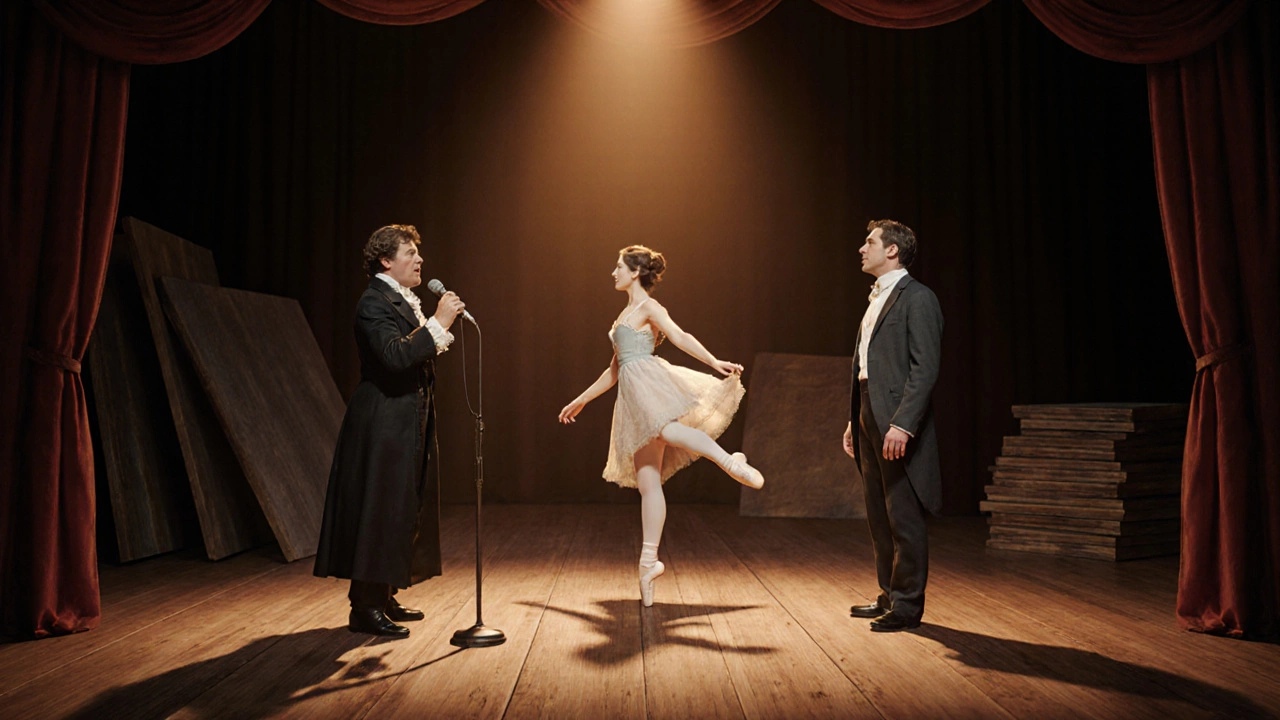Early Musical Theater: Foundations, Visual Arts Links, and Creative Insights
When talking about Early Musical Theater, the lively stage shows that emerged in the late 19th and early 20th centuries, blending song, dance, and story. Also known as Early Broadway, it set the stage for today’s big‑ticket productions. Set Design, the craft of creating visual backdrops and scenery for the stage plays a huge role, turning simple rehearsal spaces into immersive worlds. Likewise, Costume Design, the art of dressing performers to match period, character, and mood brings characters to life and anchors the story in a specific era. These visual components aren’t just décor; they’re storytelling tools that sync with Music Composition, the creation of melodies, harmonies, and lyrics that drive the narrative to form a unified experience.
How Visual Arts Shape Early Musical Theater
Early musical theater didn’t develop in a vacuum. Artists who painted with oil, sculpted forms, or sprayed walls with street art all fed into the look and feel of the stage. For instance, the oil painting techniques of the era gave set painters a palette for creating depth and atmosphere on flat backdrops, while the bold lines of Street Art, urban graffiti that emphasizes color and texture later inspired more daring, modern reinterpretations of classic shows. Sculpture informed the construction of three‑dimensional props, turning simple pieces of wood into believable furniture or elaborate set pieces. Even abstract art trends pushed designers to think beyond realistic representations, allowing costumes to become stylized symbols of character traits. These cross‑disciplinary influences mean that early musical theater is as much a visual art form as it is a musical one.
Because of these ties, anyone studying early musical theater should also get a feel for the surrounding artistic landscape. Knowing how an Oil Painting, the medium that adds texture and color depth to canvas and set backdrops works can help decode why certain scenes feel more atmospheric. Understanding the basics of Sculpture, the practice of shaping materials into three‑dimensional forms clarifies how props were built to be both sturdy and expressive. And keeping an eye on contemporary Street Art, the vibrant, often large‑scale visual language of city walls offers clues about how modern productions remix classic numbers for today’s audiences.
All this means you’re about to dive into a collection that bridges performance and visual creation. Below you’ll find articles that break down painting tricks, size trends in artwork, canvas choices, and even critiques of modern art—each piece adding a layer to the big picture of how early musical theater looks, feels, and sounds. Whether you’re a budding set designer, a costume enthusiast, or just curious about the art behind the music, these posts will give you practical tips, historical context, and fresh ideas to bring the golden age of the stage into your own creative projects.
